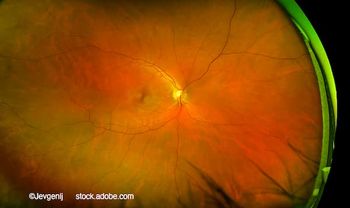
Toric IOLs effectively correct some types of irregular astigmatism
The angled bow-tie pattern of astigmatism was corrected more accurately compared with the asymmetric bow-tie pattern of astigmatism
Implantation of toric
Chen and associates emphasized the importance of eliminating as much residual astigmatism as possible after cataract surgery to obtain the best visual acuity (VA) without glare, monocular diplopia, and visual distortion. Toric IOLs have been widely adopted as an effective and dependable solution for patients with regular corneal astigmatism.2,3 However, the corrective effect of toric IOLs for irregular corneal astigmatism needs to be determined.
The investigators conducted a retrospective cohort study to observe the corrections obtained following the implantation of toric IOLs for specific types of irregular corneal astigmatism. The study included 34 with either the asymmetric bow-tie pattern of astigmatism (type I) or the angled bow-tie pattern (type II). The investigators compared the changes in the preoperative corneal astigmatism, VA, manifest refraction, and objective visual quality between the 2 groups.
Chen and colleagues reported that the average uncorrected distance VA improved significantly from 0.86 ± 0.40 logarithm of the minimum angle of resolution (logMAR) to 0.22 ± 0.15 logMAR and the preoperative corneal astigmatism of 2.05 ± 0.90 diopters (D) improved to 0.78 ± 0.57 D (P < 0.001 for both comparisons), with 32% of eyes within 0.50 D.
A comparison of the 2 groups showed that the residual astigmatism prediction errors of the type I and type II cases were 0.97 ± 0.68 D and 0.66 ± 0.37 D, respectively (P = 0.100). The mean spherical equivalent prediction error in the type II cases was significantly smaller than that in type I cases (0.07 ± 0.36 D and − 0.29 ± 0.52 D, respectively) (P = 0.030).
The authors concluded, “The toric IOL effectively corrected specific types of irregular corneal astigmatism in cataract surgery. The eyes with the angled bow-tie pattern showed higher accuracy in refractive predictions compared to the eyes with the asymmetric bow-tie pattern.
References:
Chen X, Jiang Y, Gao N, et al. Effectiveness of toric intraocular lens implantation for correcting irregular corneal astigmatism in cataract eyes. Sci Rep. 2024;14: 8868;
https://doi.org/10.1038/s41598-024-59303-0 Mencucci R, Giordano C, Favuzza F, et al.Astigmatism correction with toric intraocular lenses: Wavefront aberrometry and quality of life. Br J Ophthalmol. 2023;97:578–582;
https://doi.org/10.1136/bjophthalmol-2013-303094 Thomas BC, Khoramnia R, Auffarth GU, Holzer MP. Clinical outcomes after implantation of a toric intraocular lens with a transitional conic toric surface. Br J Ophthalmol. 2018;102:313–316;
https://doi.org/10.1136/bjophthalmol-2017-310386
Newsletter
Don’t miss out—get Ophthalmology Times updates on the latest clinical advancements and expert interviews, straight to your inbox.


















































.png)


